Kabarnet Museum Kenya
Back to Grants for Conservation ProjectsGrant Scheme
Tru Vue Conservation & Exhibition Grant Scheme
Award Year
2023
Grant Sum Awarded
£2,700
Icon Accredited Conservator
ACR
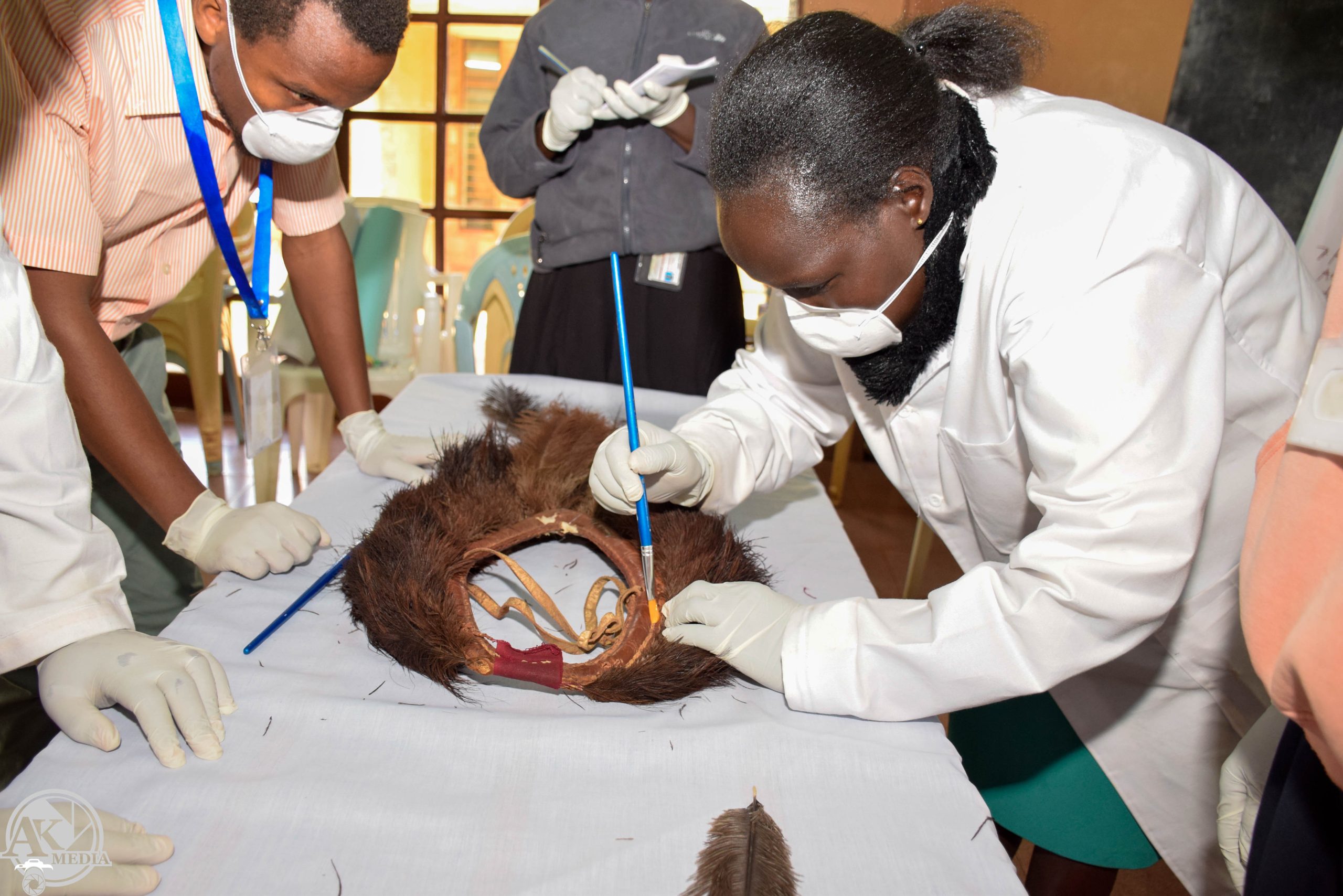
Details
Pokot traditional dress and head gear Restoration Project
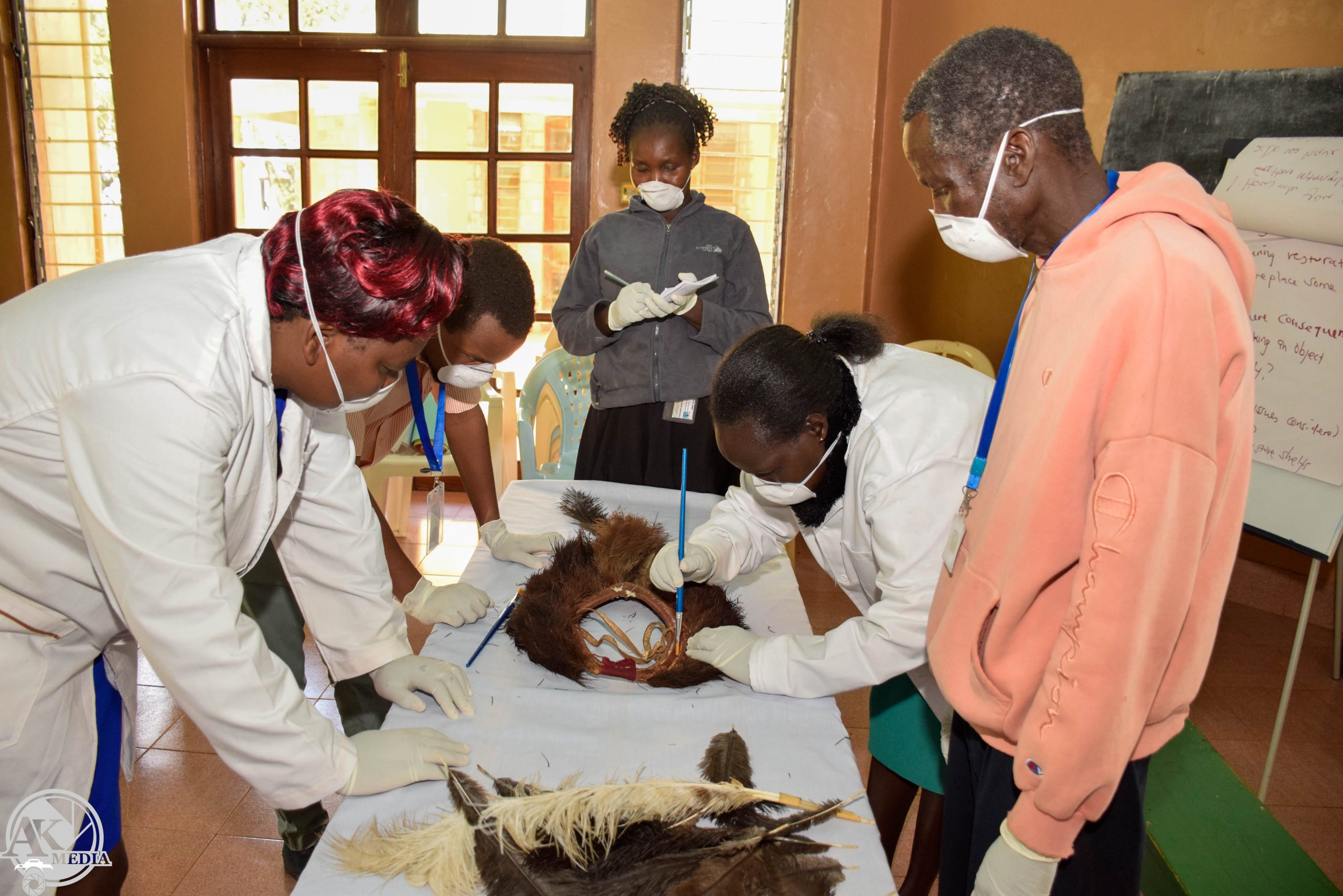
Introduction
Kabarnet Museum is a regional museum under the National Museums of Kenya. The museum was established in 1994 to showcase the cultural artifact of the Rift Valley people including Ilchamus, Tugen and Pokot in Baringo County, Kenya. The National Museums of Kenya (NMK) is a state corporation with a mandate to collect, document, preserve, research, and present the country’s past and present cultural and natural heritage. In so doing the NMK enhance knowledge, appreciation, respect, management and use of these resources for the benefit of Kenya and the world.
Following the call for application from True vue and Icon on 5th September 2022, Kabarnet museum secured a grant for £2,700 and free museum optimum acrylic. The project was to conserve and display two of the museum objects which required urgent conservation and proper display. However the museum’s funds were not enough to do the conservation work, fabrication of the display cases and transport for the optimum acrylics from the US. Therefore the museum could not pay for the transport cost out of the grant.
Object information
Traditional skirt/Seree
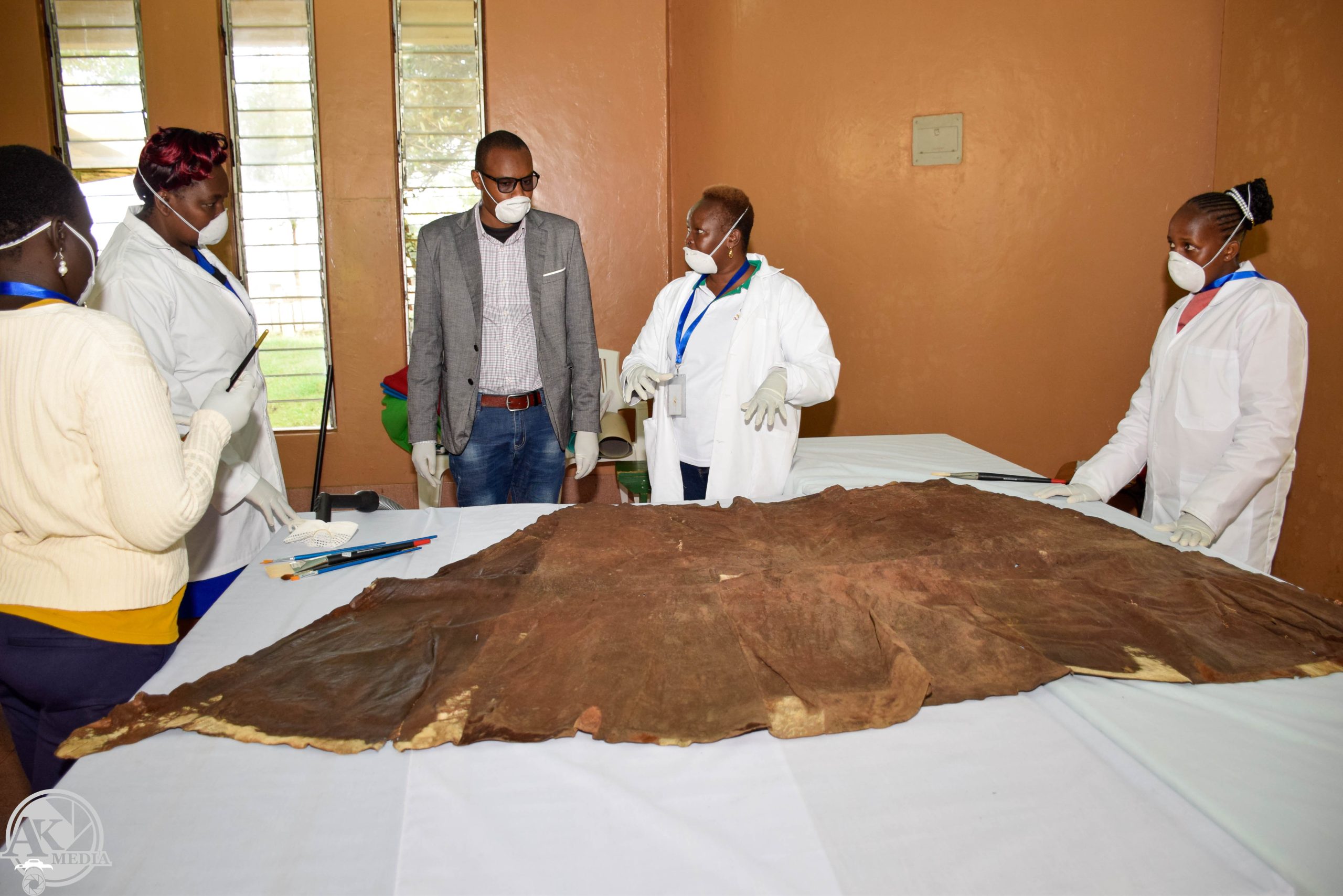
Origin: Pokot community
Approximate date of manufacture 1930’s
Material: Leather from goat skin
User: Married Women during wedding ceremonies
Dimensions: Length 99 cm Width 48 cm
Condition Assessment: The Traditional skirt Somee was on an open display where it was exposed to dust, natural light, relative humidity, uncontrolled temperature and human interference.
A careful assessment revealed that:
-The Somees was creased, cracked and torn in some areas due to incorrect temperature, human interference and age
-The object had developed grey residues of moulds due to long exposure to relative humidity and was discolored due to accumulation of dust, long exposure to a lot of light exposure and human interference
-The object was also virtually inspected for any sign of pests infestation by carefully trying to identify any likelihood of pests frass, larval cases, holes or damaged surfaces especially in the folded areas. However, this was not noticed. The Kabarnet area has very high temperatures during the dry seasons between May and July and very low temperatures between August to April.
Head gear/Sombee

Origin: Pokot community
Approximate date of manufacture :1930s
Material: Leather and ostrich feathers
User: Young worriers during war
Dimensions: Length 66 cm Width 33 cm
Before restoration an assessment of the headgear was done to establish:
– whether the feathers were stable
– the type of feathers
– the feathers veins and calamus
– any sign of darkening of the feathers as a result of age
– softness
– the shape
– type of dirt
– any missing parts
– any signs of pests infestation
During the assessment, it was established that the main dirt was dust and there were no pests. A few feathers were missing. The feathers had however turned to a darker color due to age, dust and human interference. The leather part was also very sti but intact.
Conservation process
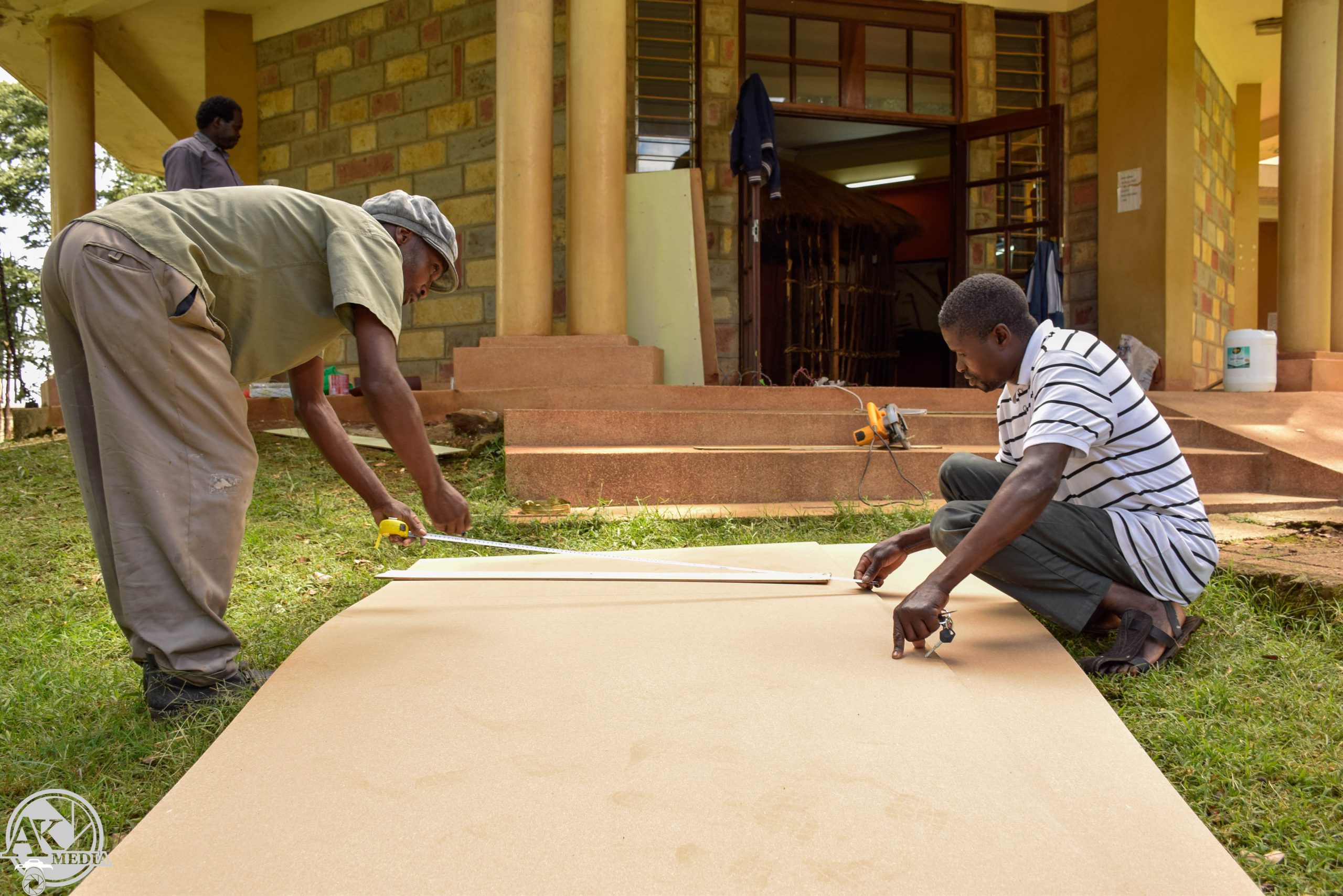
Sourcing for materials to be used
Sourcing of the restoration materials was carried out in different locations especially the Ostrich feathers. The two lead conservators visited an ostrich farm in Nairobi and acquired the required feathers. Other materials included assorted cleaning brushes, Vacuum cleaner, sponges, needles and threads, fabric, fibre staffs workshop stationery, showcase fabrication materials, mounts and raisers, and spray paints.
Community engagement
The project was aimed at bringing the local community on board in museum activities especially in conservation of culture. Working with the community fosters ownership and appreciation of the museum by the community. They will feel part and parcel of the museum hence encourage younger generation to participate in the activities. In order to achieve this, 6 community members, 3 men and 3 women, were involved in the restoration exercise. The community members shared their experience on how they used to conserve/ preserve and restore the two objects. They also enriched the existing information on the two objects.
Workshop on collection care
Most of the curatorial stas and ethnography assistants had not been trained on collection care and yet they have been handling objects. The two conservators took the stas on a one day workshop on collection care, conservation risks and restoration process. This was to enable them have basic skills in object handling and conservation management.
Restoration of the objects
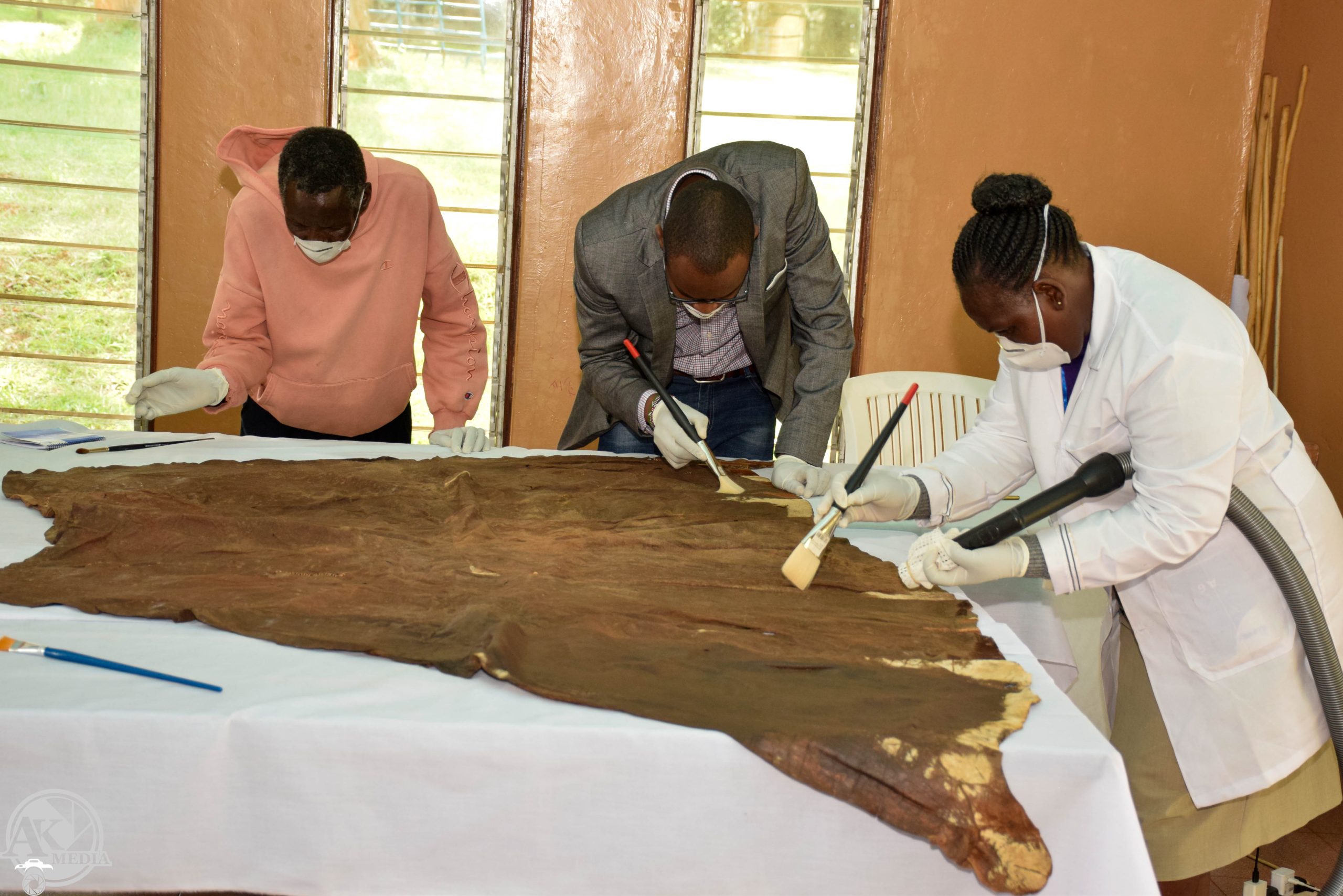
Restoration for the traditional skirt (Somee ) was done by sewing the torn stable parts. The exercise was done very slowly and carefully for the object was very old and fragile. Restoration of the headgear was done by replacing the missing and damaged feathers. The many branches on the feather’s veins were realigned with a small stick and a sponge.
After the restoration dry cleaning method was applied to the two objects. This was done with the use of soft bristled brushes and a vacuum cleaner with low suction to remove all the dirt and other contaminants including moulds. During the cleaning the conservators ensured they used gloves to protect the object from contamination from ngers oils.
Lessons learned
– Community engagement is important in museums exhibition development
– During the process we learnt that the two objects belonged to the Pokot community and not Tugen as was previously labelled
– Majority of staff in Kabarnet museum have not been trained in collection care and conservation despite being the ones in charge of the collections
– Restoration of museum objects is a long process and requires a lot of patience
The Kabarnet museum would like to thank True Vue and Icon for providing this grant. Our gratitude also goes to the community members for willingly sharing the indigenous knowledge on the restoration of the two objects. Special thanks goes to our employer the National Museums of Kenya especially Director Antiquites Sites& Monuments Dr Fredrick Manthi for giving us time and space to carry out the staff training. We also thank the staff who committed themselves to learning about collection care, conservation, restoration and their active participation in the whole process.

